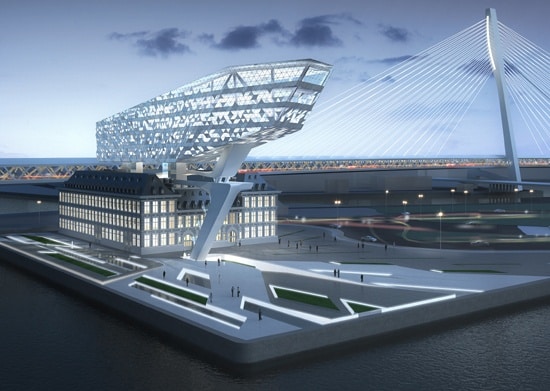The Port of Antwerp
Situated to the South-Eastern part of the North Sea on the Scheldt River, the Antwerp Port forms a major marine infrastructural depot in Europe. The port is placed second in the whole of Europe and ranks fourth internationally in terms of the cargo bulk passing through it.
The Antwerp Port is under the functioning command of the Antwerp Port Authority which also owns the port. The port is used for a multitude of purposes like storing, lading and unlading, re-packing and re-labelling of cargo. In terms of storing, the port has the capacitance to store both dry as well as liquid cargo, offering a storage capacity of over three million cubic metres for the latter.

The port also has refineries – five in totality – two of which are connected to the Rotterdam Port through a separate pipe linking, referred to as the RAPL (Rotterdam-Antwerp Pipeline). All in all, the five oil refineries offer a distilling capacitance exceeding 40 million tonnes.
Accessibility to the port is available through rail, road and even through flatboat mediums. In order to effectuate safety protocols, distinct security steps have been issued. These include scanning modems for the cargo entering the port and electronic identification cards for personnel incoming into the port. Apart from these, CCTV cameras are also equipped in the port.
The port is divided into two zones – left and right zone. The right zone consists of MSC terminal, Europa terminal and North Sea terminal along with the Berendrecht lock, Bonaparte dock, Amerika dock and Delwaide dock. The Berendrecht lock is regarded to be the world’s biggest lock with a length of 500 metres. The left zone consists of Kallo lock, Verrebroek dock, Vrasene dock and the Deurganck dock. A construction of a second lock has been commissioned by the government of Belgium in the left zone with an operational start-up deadline of 2013.
Further rail and road construction activities have been undertaken, with a completion deadline of 2013. Through this road linkage, a route to connect the right and the left zone of the port has been sought to be achieved.

Some Important Features of Antwerp Port:
- The port has three floating cranes and over 30 dock-mounted cranes
- The traffic at the port is controlled by harbourmaster, which looks after the berths and cargo transportation
- The Port uses information system APICS2 for accurate data about various aspects of the port
- The port has 1474 tanks with storage capacity of 3.6 million cubic meters of liquid bulk cargo
- Antwerp port is leading breakbulk port of Europe and is the base of almost 200 forwarding companies
- Antwerp port also provides services such as storage and logistics, pilotage, towage, mooring and unmooring services
The Antwerp Port is expected to achieve quite a few milestones in the coming couple of years. Considering the optimum utilisation of the port and the infrastructural facilities it offers, there cannot be any denying that the Port of Antwerp is a singular and an unparalleled entity.
Image Credits: yapi
Do you have info to share with us ? Suggest a correction
Subscribe To Our Newsletters
By subscribing, you agree to our Privacy Policy and may receive occasional deal communications; you can unsubscribe anytime.



